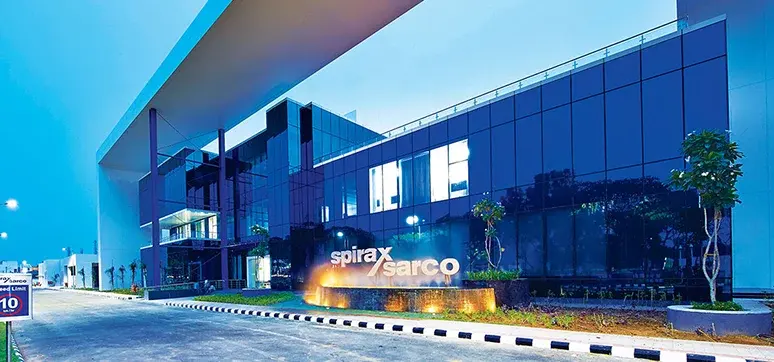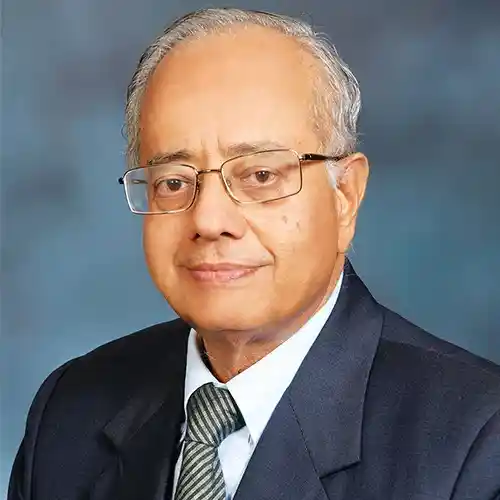Window and Façade magazine joined the Padma Shri award winner Ar. C. N. Raghavendran to talk about his journey of five decades in architecture, his sources of inspiration, his environmentally-conscious approach to design and much more.
When was the firm CRN started and when did you join the firm?
At about the time when I was born, my father had started an architectural office single handedly in the early 40s and during my childhood, my father used to take me with him to the site inspection and also sit in some of the review meetings with clients and contractors. I was quite fascinated to observe that out of nowhere a building plan emerging on the tracing paper and magically getting built, though I had no clue as to the process that made this happen. I felt thrilled to see the connection between sketching by hand the ideas in the head and the shaping of the building from the plans. I felt that this is the only right path for me and did not look at any other career options.
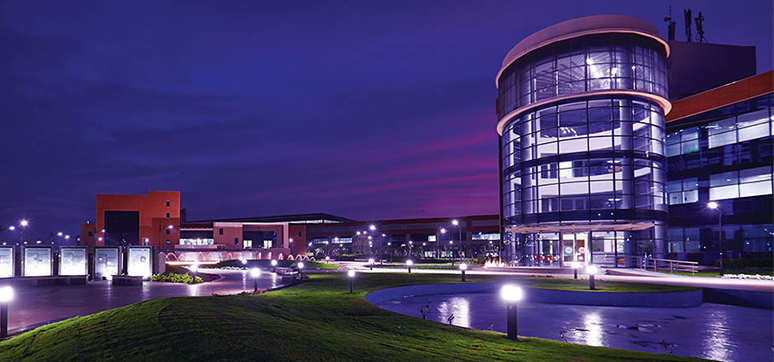
After completion of my graduation from IIT-Kharagpur, I went to the University of Berkeley to do my Masters. After a one year stint in Boston, I returned to join my father’s architectural firm in 1968. The exuberance of youth, idealised worldview on what is wrong and what needs to be done and an over confident self belief that it is all within one’s power and capability to change the world – the above passions are vigorously alive in freshly passed out architecture graduates than any other discipline.
The rigid hierarchy of career advancement in most other professions seems to dampen the passion and urge of a young entrant in such disciplines; but luckily, architecture again is about a very few disciplines where practitioners can retain and practise their beliefs in a greater degree than most other professions.
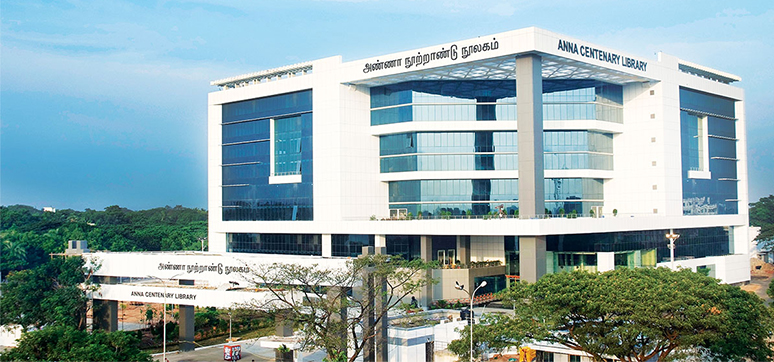
In the first few months, exposure to the challenges of the professional office would perhaps be very confusing, but at the same time an exciting period in the career of an architect. One realises that five years at school has not prepared one adequately on the professional front, and, a good practice provides a platform that challenges the ability and skills. Here is where a fresh graduate can create the best opportunity for oneself, for starting a lifelong process and it is a process of learning and continuous learning.
The design of the buildings may be different or changed over a period of time, but the spirit and process of design only get continuously improved. My early years provided a fairly large and variant mosaic of design portfolios – from group housing, educational, commercial buildings, manufacturing facilities to institutional buildings. The clients varied in widely from one another and so was their organisational approach. These were the humble periods in the post-independence era of Indian economic and social evolution. Clients rarely stuck their neck out for their building projects. It was most unlike the current milieu of bold blusters and speculative entrepreneurship that most clients flaunt in globalised India.
The young student turned graduate architects can make the best of this disorder through associated learning from colleagues and co-professionals. Those with strong yearning observe and learn and also innovate. Those with a strong foundation on any aspects of the profession could be design management, material science, interiors, construction technology, research, assimilation to associate aspects like sustainability, building physics, structural and engineering aspects, etc. can find their interest to specialise in the said discipline.
Tell us about your early practice and projects?
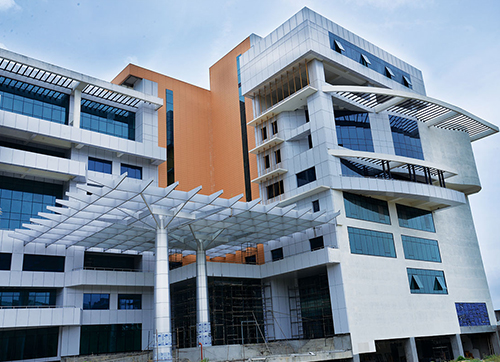
The early period till the 80s was the time for my projects for institutional clients like RBI Office and Housing in Chennai, Central Provident Fund Offices and Housing at Trivandrum, a few residential and medical facilities projects besides industrial projects for ITC– Printing and Packaging Division in Chennai, TVS Group, English Electric Co and several automotive related manufacturing facilities. Those were days of learning and coping. Getting to a level of client acceptance and trust of one as a promising but nevertheless ‘inexperienced’ architect who can be seriously engaged with was challenging.
Equally challenging was the lack of authoritative knowledge on construction specifications, practices and building costs. However, help invariably came from seniors and that too from other disciplines like structural engineer, electro-mechanical engineers and quantity surveyors. These experiences made it clear that mastery over the design aspects of architecture needs to be equally matched by a collaborative multi-disciplinary team.
Most importantly, the early experience taught the indispensability of adequate effort on the part of the architect to understand the client’s programme or to simplify, what are the expectations of the facility to be designed, both physical and subjective aspirations and how does he or she propose to use the facility and how we as architects can respond. This goes beyond area programmes and bubble diagrams. Equally important was to integrate the site, opportunities and challenges in the design to be comprehensively responsive to definable and indefinable parameters.
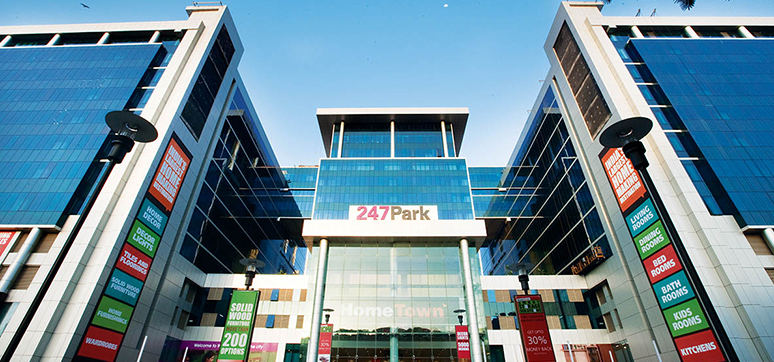
In these early projects, there were challenges galore – from a tough hilly site in Trivandrum to immensely complicated technicalities of the work at ITC. The public housing projects and the institutional projects had to be executed under stringent governmental protocols, and budget controls where the signed construction contract is sacrosanct and is inflexible. Hence, all design decision making was not a progressively evolving scheme, but one on which all design and detailing decisions, and therefore all specifications with quantification had a limited time-window to be performed.
The formalities were enough to Anna Centenary Library, Chennai overwhelm a fresher unless helped along with the collaborative and collective wisdom of different disciplines within the design team. This was a period of design freedom but within a framework of self-learnt discipline and work ethics combined with a healthy cooperation and mutual respect with co-design team members. This was an early learning that multi-disciplinary approach was the foundation of good design if effectively implemented. This decade also witnessed two works of the interpretive design of buildings set in historic or cultural heritage backgrounds. The design of Kalakshetra Auditorium and the Pondicherry University buildings were explorations in this direction.
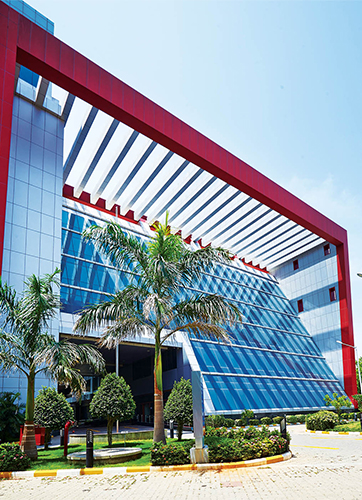
The 90s were marked by a string of new era projects. Some of the worth mentioning work of this period are international standard sports infrastructure in Chennai for the South Asian Federation Games and a similar multi-purpose stadium in Cochin. The Spencer Plaza, one of the biggest and the earliest retail mall in 1992 and numerous IT and ITES campuses for Indian IT majors were completed during this time. International MNCs as well as government sponsored IT parks in Chennai (TIDEL Park) and Bangalore (Khanija Bhavan) were the other interesting projects. A number of a greenfield car manufacturing facilities for companies like Ford, Hyundai and Toyota set the tone of the work in this decade.
During this period, the bar was set higher for the architects in terms of performance criteria. The architects were expected to acquire and demonstrate a much higher working knowledge of other related disciplines while at the same time elevate the architectural design sensibilities. Besides, the IT buildings brought heightened clients’ awareness in areas such as design for sustainability, design for human comfort, health and safety, and incorporation of building management and integration capabilities in building design.
It was not just a function of hiring sub-consultants, but the architect had to take the lead inventively and set the benchmark of client expectations and delivery of the design brief. Learning to work with specialist project managers, a transplanted foreign mechanism and the devising of work plans to overcome some unreasonable restrictive or obstructive practices in the conventional functions of architects were other highlights of this decade. This period also witnessed receiving awards for Design Excellence from Indian Institute of Architects and Architects of the Year Award.
The next decade was wonderful with an international award for the ‘Intelligent Building of the Year’ in the US in 2005 for the Ebene Cyber City Campus and the Cyber Tower – an IT campus with a signature IT tower, set in a most attractive site in Mauritius. During this decade, I got deeply involved in the green building movement and also designed more than a dozen buildings that were highly rated. Many projects, including 247 Park in Vikhroli, Infosys campuses in Chennai, Mysore and Jaipur, NIIT IT Campus at Greater Noida, Oracle Campus in Hyderabad and Tata Consultancy IT Campus at Chennai, were completed during this time.
In 2011, I received the most coveted Padma Shri Award and also IIT Kharagpur’s Distinguished Alumnus Award in the same year and in 2012 was awarded Architects (IIA) Hall of Fame Award. The four plus decades of architectural professional practice that I have had the good fortune to enjoy does take one through a checkered field of experience and learning as well as many eminently unforgettable events.
Could you please talk about a few of your ongoing and completed projects?
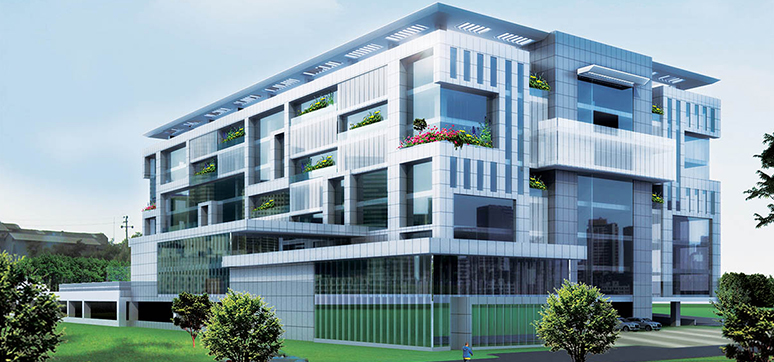
CRN is uniquely placed having seen and been part of the architectural scenario for over 70 years, of which I have been a part of the process for more than five decades. Across the decades, we have witnessed dynamic changes in the socioeconomic fronts. Architectural thought and philosophy are deeply influenced by the factors that and the devising of work plans to overcome some unreasonable restrictive or obstructive practices in the conventional functions of architects were other highlights of this decade. This period also witnessed receiving awards for Design Excellence from Indian Institute of Architects and Architects of the Year Award.
The next decade was wonderful with an international award for the ‘Intelligent Building of the Year’ in the US in 2005 for the Ebene Cyber City Campus and the Cyber Tower – an IT campus with a signature IT tower, set in a most attractive site in Mauritius. During this decade, I got deeply involved in the green building movement and also designed more than a dozen buildings that were highly rated.
Many projects, including 247 Park in Vikhroli, Infosys campuses in Chennai, Mysore and Jaipur, NIIT IT Campus at Greater Noida, Oracle Campus in Hyderabad and Tata Consultancy IT Campus at Chennai, were completed during this time. In 2011, I received the most coveted Padma Shri Award and also IIT Kharagpur’s Distinguished Alumnus Award in the same year and in 2012 was awarded Architects (IIA) Hall of Fame Award. The four plus decades of architectural professional practice that I have had the good fortune to enjoy does take one through a checkered field of experience and learning as well as many eminently unforgettable events.
Could you please talk about a few of your ongoing and completed projects?
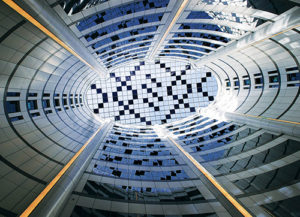
CRN is uniquely placed having seen and been part of the architectural scenario for over 70 years, of which I have been a part of the process for more than five decades. Across the decades, we have witnessed dynamic changes in the socioeconomic fronts. Architectural thought and philosophy are deeply influenced by the factors that have been driven by the challenges of finding an approach to create an equitable and sustainable built environment. An approach fuelled by thorough enquiry, understanding, and inventiveness has kept CRN among the forerunners in innovation, adaptability, and sustainability in the built environment.
Consideration of harmonious design with nature to create a sustainable solution was the focus of CRN’s design in the early 80s, long before sustainability became desirable and later inevitable. CRN has also been in the forefront of the innovative design of buildings at times when typologies of such buildings were not even fully understood or defined.
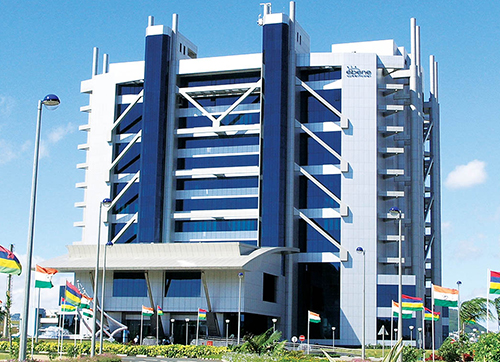
The design of campuses for IT parks, such as TCS at Siruseri, Infosys at Mahindra World City and Jaipur, Oracle at Hyderabad, TIDEL at Chennai and Coimbatore, etc. were some of the early examples of CRN works in the first decade. Currently, CRN is engaged in the design of new campuses for Oracle at Bangalore and Amazon at Hyderabad. Now, the IT work space environment has undergone changes. The scale of buildings for ITs in India has catalysed new complexities in building design, bringing out high performance façade and services as being important factors.
This has resulted in an increased collaboration of architects along with sustainability consultants and service consultants. The large foot plates of IT buildings have thrown up the challenge of daylight penetration which resulted in increased vision glass areas in external façade accompanied by problems of reducing solar heat gain. This period has also seen advances in technology to control and reduce solar heat gain, glare and other factors of the façade which negatively impacts indoor human comfort. This has spawned new technology, materials, methods of assessing façade performance, not only in terms of reducing heat gain but also for physical safety including fire.
Therefore, a common denominator has emerged in creating a new paradigm of sustainability as the focus of the architect’s design approach, including experimentation with passive architectural design, which sometimes draws inspiration from traditional and vernacular design that existed in harmony with nature centuries back.
Tell us about your environment conscious approach to design?
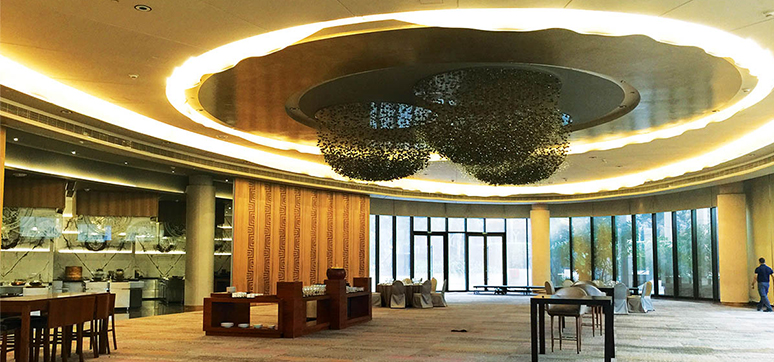
To us in CRN, climate responsiveness has always been at the core of design at first, long before climate change and its consequences became a threat to the planet and human life. The best example is in the design of an auditorium for Kalakshetra in Chennai. This building was designed in the early 80s and did not depend on any mechanical intervention of lighting, ventilation and acoustics. Another one was the design for TIDEL Park in late 90s, the first large building dedicated for IT services. Here, the facility demanded high interventions in electro-mechanical infrastructure combined with large footplates.
This was also prior to the concept of green building emerging in India. Yet, this building had all the features of the sustainable building in its design, including integrated building management system, thermally efficient external skin, high levels of energy efficiency driven by an innovative HVAC system that was far ahead of its time. CRN’s design approach was also reflected in the design of Anna Centenary Library, one of the largest public libraries in south India and Arogya Soudha – health department offices for the Government of Karnataka at Bangalore. In the first case, use of high window wall ratio necessary for daylighting at the library space was suitably merged with the use of bold and architecturally dominant open grid roof overhang.
In the second case, the design was to take advantage of the climate of Bangalore where comfortable ambient air temperature prevails for most of the year. Here, we were able to control and maintain optimum thermal and daylighting comforts in spite of limiting the window wall ratio, but enhance thermal and daylighting comfort through well placed courtyards and skylights. In both the cases, passive elements of building design contributed substantially to energy efficiency, thermal comfort, daylighting and thus got high scores in the rating system for sustainability.
What are the key factors to consider while designing and installing façades and fenestration in any building?
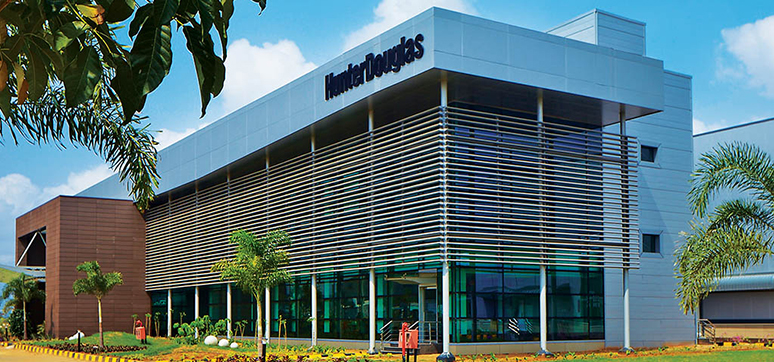
There is no standard formula or guidelines. But the architect has to understand the importance of geography, climate, orientation, use, client outlook, window wall ratio, insulation, thermal studies/ performance assessment at the design stage. The architect has to be conscious of daylighting and outdoor views, reduce heat gain, glare & sound and safety. The architect also has to understand that an automatic solution of high levels of glazing on the façade is not an automatically modern and contemporary solution.
Buildings in India need to make a statement that is rooted in the local context, technology and lifestyle. Fenestration and façade also have to factor in life safety factors, particularly fire and seismic. The insulation and reduction in heat gain whether it is opaque or transparent parts of the façade is a consideration that ranks high on the list.
Brief on innovative technologies and materials adopted for building façades and fenestrations in some of your projects?
Some of the innovative technologies have been used and found both advantageous and disadvantageous and they are:
• Ventilated façade on rain screen principle – we have used it in HCC – 247 Park at Vikhroli, Mumbai and Hexaware Technologies Software Park at Siruseri, Chennai, both using Aluminium Composite Panel FR Grade; using extruded clay tiles in GE manufacturing facility at Pune
• Building-Integrated Photovoltaics (BIPV) in current projects
• Multiple glazed thermally broken window panels with high noise reduction coefficient from 92 dB to 35 dB, acoustically tested in an independent lab at Dubai for room windows in ITC Grand Chola, Chennai, a hotel on aircraft landing path – for advanced acoustics and thermal properties
• Perforated metal screen as a sandwich panel in DGU – copper mesh sandwiched between two laminated glass panels – in the Ballroom of Hyatt Regency, Delhi
• Light shelves as part of façade glazing in current projects
• Programmable adaptive solar devices, tracking the sun being used in a platinum rated building
• Aluminium screen louvers for solar shading at the Hunter Douglas manufacturing facility at SriCity and at Rane Motors manufacturing facility at Trichy
• The expanded metal screen at Chennai Metro Rail Limited’s Office building in Chennai
• Honeycomb metal flat panel on Ford IT Building at Chennai and at Spirax Sarco manufacturing facility at Mahindra World City
• Perforated aluminium fins at Amazon, Hyderabad
• Movable Façade – for a corporate R&D Block
• Priva-Lite XL (external use) and Privalite (internal use), both being electronically adjustable transparency of the glass in Saint Gobain R&D facility at IIT Research Park, Chennai, which also has electrochromic glass which can change tinge and transparency based on solar incidence
• Insulated external cavity walls with over deck insulation at Infosys campus, Jaipur
What is an intelligent façade?
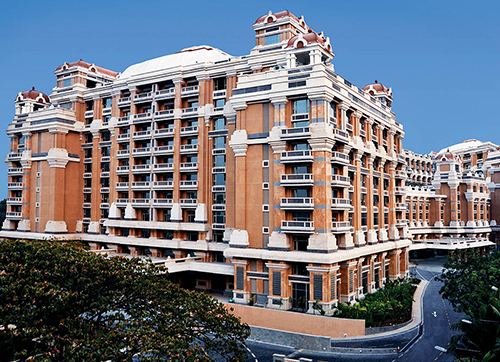
An intelligent facade is an adaptive system that reacts to different climatic conditions and adjusts its shape and extent automatically depending on the orientation and outdoor ambient/indoor design conditions. Of late, it’s been used in high performance buildings and is integrated both for control and operation through an integrated building management system which also links to indoor lighting systems to produce a comfortable interior ambience.
By programming, the intelligent facade dynamic reduction in solar heat gain is assured. Such facades need no manual intervention and hence perform the task of heat gain reduction exactly as per design. This leads to the best optimisation of reducing the cooling load of buildings. Obviously, the cycle of dependency reaches up to the level of reduction in the greenhouse effect. By integrating adjustable light shelves, also synced to solar movement, enable deeper penetration of natural daylight and reduce electrical consumption.
How do you choose the apt cladding material for your project?
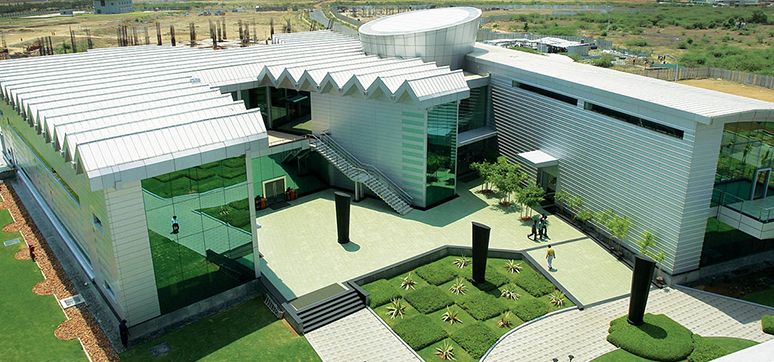
It is up to the designer to evaluate the needs and functions expected of the facade for the type of building under design and define the objectives of facade performance, decide on the level of energy performance and choose materials appropriately. Not all buildings will perform with a ‘one solution fit all’ kind of design. Of course, I am not mentioning about architects’ conceptualisation on the visualisation of the building externally. Gradually, several standards are emerging for defining thermal, visual light transmission, solar heat gain coefficient and glare performances, the most common being the ECBC code and Chapter 11 of NBC 2016.
Fire resistant performance is also being made mandatory. Structural aspects of the facade, particularly in wind and seismic conditions are important, the realisation of which is producing increased numbers of facade testing labs. Also, several advance software is available where the solar and daylighting performance of facade can be assessed in advance. Self-cleaning ability and nonstaining performance requiring the least maintenance is another crucial criteria. This is where the perforated screens or metal screens have shortcomings in urban Indian conditions due to dust and smoke. All these factors are important while choosing the facade materials.
Is curtain wall system suitable for Indian weather conditions?
So long as it meets performance and aesthetic criteria – being lightweight and factory assembled with unified assembly on site, speed of erection, less labour dependency, elimination of elaborate scaffolding systems, structural ability to meet all foreseen dynamic forces and other design criteria, then curtain wall system is suitable.
CRN has accomplished several projects in the UAE, Bangladesh, Malaysia, Sri Lanka and Guyana. Could you please tell us about your ongoing projects abroad?
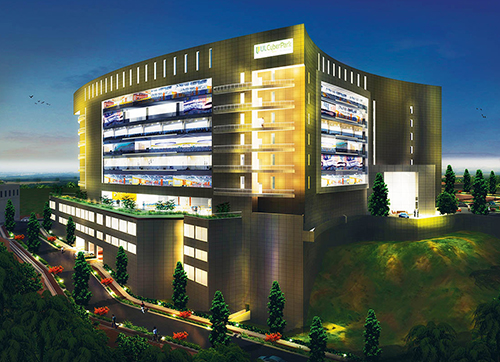
I limit myself to speak about a project that got global recognition as ‘Intelligent Building of the Year’ awarded by a US-based organisation. This is a project called the Ebene Cyber Tower – an IT signature building located in Ebene Cyber City in Mauritius. Even several years after completion, this iconic building is a showpiece. Mauritius had extreme wind forces and frequent cyclones, not only the building had to be designed with stability under such conditions, but even the facade was designed for the stringent wind conditions.
Even the building shape was conceived to deflect wind forces. In terms of the sustainable features of this building, it required no artificial lights during the day time and innovative air-conditioning system contributed to a high level of energy performance. The functions of the entire building were monitored by intelligent management system which also controlled the performance of individual building systems.
What are your views on future facades and fenestration technologies and materials?
In future, the focus will be more on adaptiveness and automated operation with low energy footprint for materials assuring safety and high thermal, visual and acoustical performance, offering lowest maintenance. Using materials with high strength to weight ratio with sustainable life cycle aspects will be the direction in future. Such a facade can be individually operated, ranging from individual rooms in the case of residential towers and medical facilities, individual zones in the case of offices.
What is your advice to young aspiring architects?
The buildings in the social context will become even more complex and the dichotomies will multiply. Therefore, my advice to young professionals is to question constantly the present way of doing things. The present solution will not answer the future problems. The only route is open mindedness, curiosity, inventiveness and creativity. Inclusivity cannot be overlooked. Exploration and experimenting will be the stimulus for finding new directions. Multidisciplinary knowledge and the ability to collaborate with other professionals will become more common. Young architects should get exposed to the global practices and find relevance in the Indian context.
